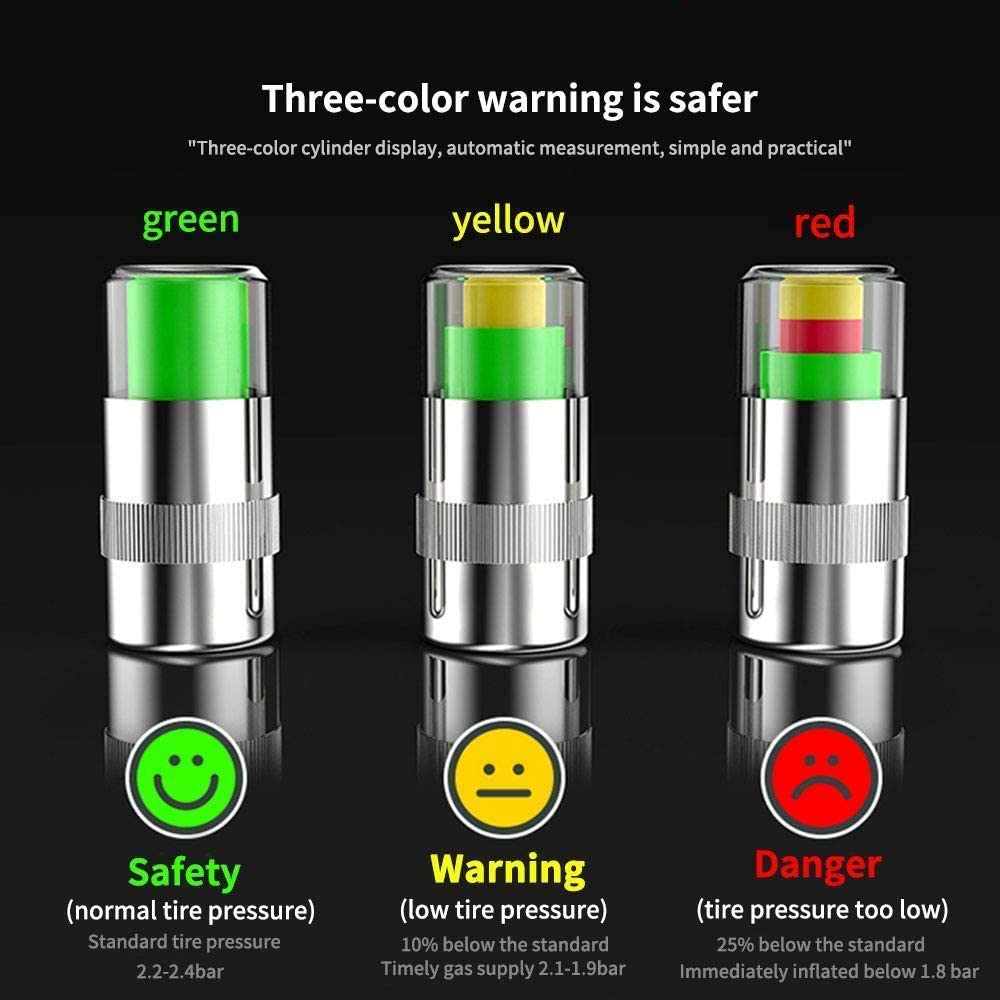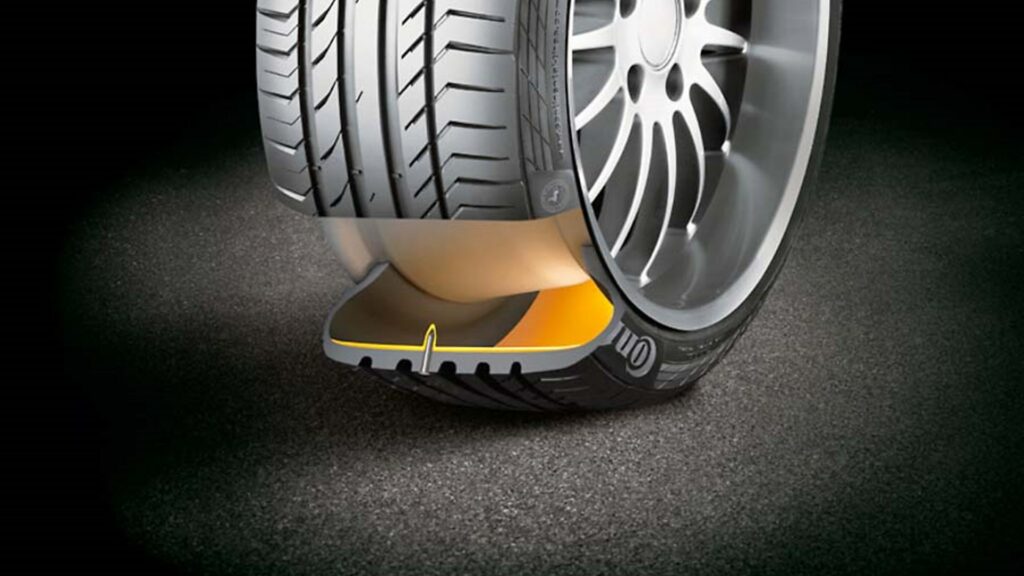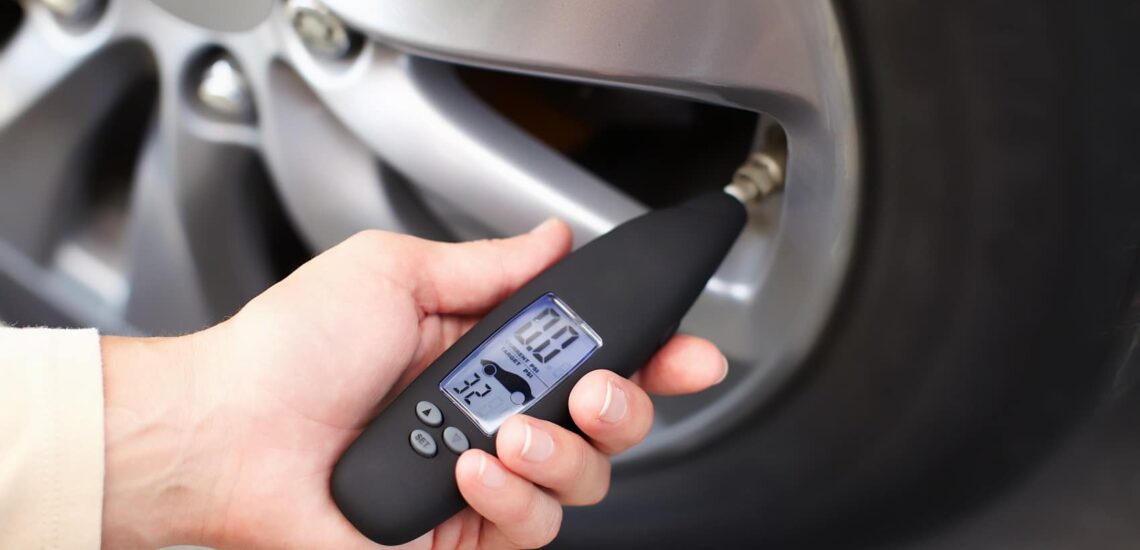A primeira patente de um pneu foi obtida em 1846 e, desde então, as rodas têm sido constantemente perfuradas. Está claro para todos que um pneu furado não é um bom presságio. E a perda de pressão pode ser muito perigosa: não é à toa que o parágrafo “Verificação da pressão dos pneus” é um dos primeiros na seção “Manutenção diária” das instruções de operação do carro.
Quando o pneu dá seu último suspiro, a resistência ao rolamento aumenta significativamente. A que isso leva? Para aumentar o consumo de combustível, aumentar o desgaste dos pneus e, claro, para o deslizamento lateral do carro. Além disso, um leve deslize pode ser atribuído à inclinação de uma estrada ou da pista da roda. Assim, o motorista pode continuar dirigindo por muito tempo por engano ou inexperiência. E o mais perigoso disso é que um pneu furado pode sair do disco ou virar em uma situação de emergência, por exemplo, durante manobras ou frenagens extremas. É um caminho curto até o acidente.
Portanto, é necessário se livrar dessa bagunça de qualquer forma. E quanto mais cedo o motorista perceber a perda de pressão, melhor. Obviamente, a maneira mais fácil é verificar a pressão antes de ir, conectando alternadamente uma bomba ou manômetro a cada roda. Mas somos pessoas preguiçosas e esquecidas. E não é um grande prazer mexer com alguns dispositivos no frio ou na chuva. Além disso, já existe um labirinto de sistemas que podem verificar essa pressão.
As mais simples delas são as tampas especiais com indicadores coloridos que são instalados em vez dos padrões nas válvulas de inflação. A pressão caiu abaixo de, digamos, duas atmosferas – uma linha amarela de advertência (laranja, roxa) aparecerá sob a tampa transparente dessa tampa milagrosa. Ano, veja, há algo errado com a roda, você precisa verificar. A pressão caiu ainda mais – a tampa se transformará em outra cor, geralmente vermelha, o que indicará a criticidade do que está acontecendo. A vantagem dessa abordagem é a simplicidade. A desvantagem não é uma boa informatividade. Afinal, as tampas só podem ser vistas durante uma parada. Ainda assim, é muito mais fácil andar pelo carro antes de sair, observando as cores das tampas, do que medir a pressão toda vez.

Outra desvantagem é que as tampas começam a informar sobre mudanças de pressão somente quando caem abaixo de certos valores, o que, aliás, pode ser bastante normal para seu carro e suas rodas. Portanto, é necessário escolhê-los exatamente para o seu carro.
E para perceber algo errado ao dirigir, seria bom ter um sistema eletrônico a bordo que notificasse automaticamente sobre quedas perigosas de pressão, e não apenas notificasse, mas o fizesse a tempo (para que você tenha tempo de se orientar) e sem acionamentos falsos.
Nesse caso, o sistema de controle instalado avisará o motorista sobre a alteração no parâmetro correspondente no momento certo e lhe dará tempo suficiente para parar o carro com segurança. É claro que esses sistemas não ajudarão em casos de furo grave ou explosão de um pneu, pois o motorista sentirá o carro escorregar mesmo sem sensores. Mas esses eletrônicos são simplesmente insubstituíveis por uma punção “lenta”.
Por exemplo, existem sistemas que transmitem dados de pressão e temperatura dos pneus para a unidade central por meio de comunicação por rádio. E também existem sistemas que podem transmitir esses dados via comunicação Bluetooth para telefones e comunicadores. E isso é muito conveniente.
Mas também existem sistemas mais inteligentes que funcionam não com sensores de pressão “reais”, mas por meio do ABS. Eles são instalados na configuração serial dos carros. Como eles funcionam?
A eletrônica, com a ajuda de sensores, mede as velocidades de rotação das rodas e sua diferença relativa a qualquer momento. Como você sabe, quando a pressão cai, a altura da seção do pneu fica mais baixa. Consequentemente, a velocidade de rotação da roda com um pneu “doente” aumenta, portanto, a diferença nas velocidades de rotação das rodas em um eixo também aumenta. Como resultado, o sistema registra essas alterações e emite um sinal de alarme.
O que há de errado com essa forma indireta de medir a pressão dos pneus? Tais sistemas podem ser acionados, por exemplo, em curvas longas, quando o sistema registra uma grande diferença nas velocidades de rotação das rodas de lados diferentes (afinal, as rodas externas giram a uma velocidade maior que as internas) por um tempo relativamente longo. E essas são apenas as pequenas coisas.
Em alguns casos, esses sistemas são totalmente inúteis. Por exemplo, quando pneus com tecnologia Run-Flat são instalados em um carro. Lembremos que a altura da seção dos pneus com essa tecnologia, mesmo com uma perda total de pressão, diminui ligeiramente – em cerca de 30-40%. Não há pressão no pneu e as paredes laterais reforçadas continuam “segurando”, e não apenas segurando, mas permitem que você continue dirigindo por um tempo suficiente.

No entanto, esse sistema pode ajudar muito, especialmente em uma estrada longa, avisando oportunamente que há problemas com as rodas. Mas você não deve confiar totalmente nos “ajudantes”. Portanto, escreveremos apenas duas, não, três palavras, em vez de uma conclusão. Cuidado com a pressão, amigos! Pelo menos uma vez por semana, e se você notar que a roda está um pouco plana, não seja preguiçoso, encha-a.
Esta é uma tradução. Você pode ler o original aqui: https://www.drive.ru/technic/4efb330d00f11713001e35c3.html

Publicado Janeiro 06, 2022 • 4m de leitura





